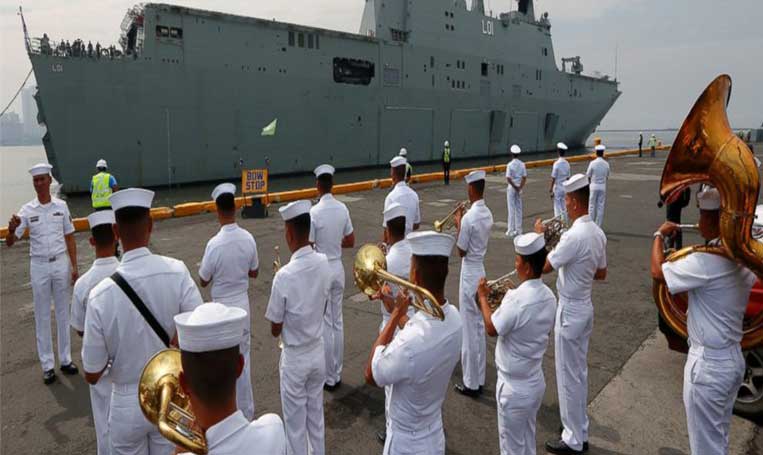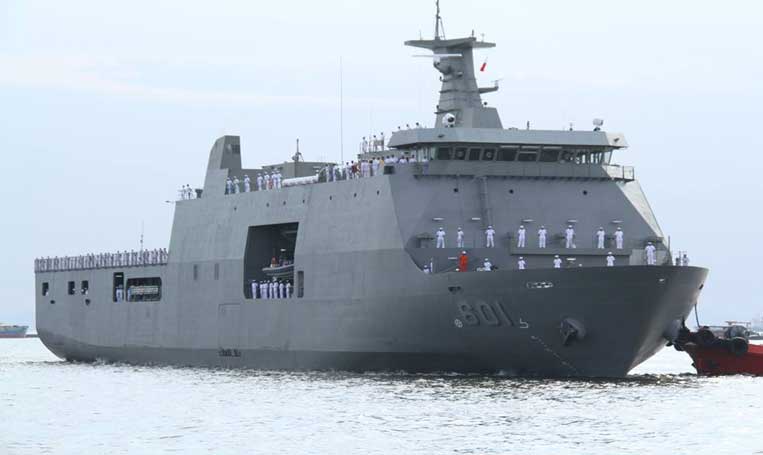Subic Bay rediscovers strength in unity
Posted 7 years ago
SUBIC BAY FREEPORT—#OneSBMA and #StrongerTogether may just be hashtags used by employees of the Subic Bay Metropolitan Authority (SBMA) on social networking and microblogging sites, but they are considered powerful symbols of shared struggle, victory and hope among stakeholders in this bastion of investment and industry.
The hashtags, after all, embodied the common aspiration among various sectors in the Subic Bay Freeport that recently worked together to unify the one post that affected them all: the position of the SBMA chairman and administrator.
That post, now held by lawyer Wilma T. Eisma, who was first appointed SBMA administrator in December last year, presides over not only the length and breadth of the 67,452-hectare special economic zone, but also over more than 1,500 registered companies with $10 billion worth of investments and employing more than 115,000 workers.
Eisma was appointed by President Duterte to the unified chairman-administrator position on September 26, following half a year of leadership dispute with then-chairman Martin Diño.
The conflict not only threatened to gnaw at the insides of the 25-year-old agency and reverse its accomplishments in the past several years as the country’s biggest and most progressive free port, it also endangered the business of local and foreign investors here and the livelihood of free-port workers.
However, it also gave stakeholders of the Subic Bay Freeport a first-hand lesson in unity, and the importance of malasakit, or caring, for the common good, as a core value in economic enterprise.
 |
| In Photo: The Subic-Clark-Tarlac Expressway joins Central Luzon’s twin engines of economic growth. |
Change of men
 |
| SBMA Administrator Wilma T. Eisma: “We found strength in a common battle and rediscovered solidarity under a common purpose.” |
Those affected by the leadership conflict in SBMA point to Executive Order (EO) 340 as the root of the misfortune. The order, signed by President Gloria M. Arroyo in 2004, separated the position and powers of the SBMA chairman from that of the SBMA administrator, the original appointee under Republic Act 7227, which created the SBMA.
The split positions apparently worked well under two sets of appointees before: Chairman Francisco Licuanan and Administrator Alfredo Antonio from 2004 to 2006, and Chairman Feliciano Salonga and Administrator Armand Arreza from 2006 to 2011.
But that soon changed when Diño, popularly known as chairman of the Volunteers Against Crime and Corruption (VACC) and PDP-Laban’s surrogate presidential candidate for then Mayor Duterte, took over as SBMA chairman in October 2016.
At first, Diño exemplified in Subic the “change” that the Duterte administration has promised. Vowing to capitalize on the achievements of his predecessor and the support of President Duterte to make Subic the best free port in Southeast Asia, he won over the Subic constituency by promising to look after the interests of both the investors and the lowly workers.
But it soon became apparent that the former barangay captain from Quezon City had wanted to wield power also as administrator.
Just two weeks after his arrival in Subic, and as Malacañang sought nominees for the SBMA administrator post, Diño’s allies began calling for the consolidation of the SBMA chairmanship with the administrator position, pointing out that the appointment of separate officials to the two posts violated the law.
When then SBMA Deputy Administrator for Legal Affairs Randy Escolango was designated by the Palace as OIC administrator on the third week of October, there began a series of foil and counterfoil between the two officials.
In a memorandum dated December 12, 2016, Diño averred that, “In faithful compliance to the instructions of President Duterte, I have caused the institution of criminal as well as administrative cases against Atty. Randy B. Escolango relative to his claim that he was designated by the Office of the President as OIC Administrator and to his string of unlawful and unauthorized actions.”
At one point, Diño stopped all business transactions in the SBMA.
Escolango also fought back, voiding over 30 office orders and memoranda issued by the chairman for lack of authority, including the appointments of some 14 high-level consultants.
Escolango also voided what he called Diño’s “self-appointment” as officer in charge of the SBMA’s Law Enforcement Department, whose head was then on terminal leave prior to retirement.
Confusion
“The result was chaos in the service,” said Amethya dela Llana, manager of the SBMA Ecology Center, who was among the SBMA employees who had called out the chairman’s actions as unbecoming of an official.
The infighting at SBMA temporarily abated upon the appointment of Eisma as administrator in late December.
In their first “State of the Freeport” last April, Diño and Eisma outlined in broad strokes an ambitious program to expand the Subic Bay Freeport’s infrastructure, and then leverage the same to position Subic as a major production and distribution hub in the Asean region.
The duo then echoed the national mantra of “Build, Build, Build” to keep Subic Bay sustainable, as well as to help in national developmental efforts.
The following month, however, Diño again broke the spell by issuing Administrative Order 01-2017, which sought to create a task force under his office ostensibly to “inspect, monitor and faithfully implement the laws in the conduct of business and financial operations and collections” of the agency.
Eisma cried out that the creation of such a task force would interfere and encroach upon the power, function and duty of the administrator and CEO. She also lamented the accusation in Diño’s order that the SBMA was in dire financial straits and in danger of collapse.
With the outcry, the SBMA board of directors issued a letter on June 1 chiding their chairman for his utterances, saying that they “cannot support your action of issuing an administrative order well beyond the scope of your duties as chairman of the board, unilaterally declaring that the operations of SBMA are in danger of ‘financial collapse’ and creating a task force…without approval of the board.”
The last straw
This ensuing conflict sparked an investigation by the House of Representative on EO 340, which separated the position and functions of the chairman from that of the administrator.
It also galvanized the local community to action, voicing out their concerns on the issue.
In a joint manifesto, seven local chief executives in communities around the Subic Bay Freeport decried Diño’s actions and also expressed support to Eisma in the ongoing leadership tussle.
The manifesto signed by Bataan Governor Albert Garcia, Olongapo City Mayor Rolen Paulino, Mayor Antonio Joseph Inton of Hermosa, Bataan; and Zambales Mayors Jay Khonghun of Subic town, Estela Antipolo of San Antonio, Elvis Soria of San Marcelino, and acting Mayor Christian Esposo of Castillejos, declared “unwavering and unconditional support to the SBMA Administrator and Chief Executive Officer, Atty. Wilma T. Eisma”.
On June 8 the Subic Bay Freeport Chamber of Commerce headed by businesswoman Rose Baldeo wrote House Speaker Pantaleon Alvarez to say that “it would be for the benefit of the SBMA and its locators to have only one person for the position of SBMA chairman and administrator instead of separating the two.”
Baldeo added that the confusion caused by the separation of positions “runs contrary to the mandate of the SBMA to create a harmonious environment for the businesses to generate employment opportunities in and around the zone and to attract and promote productive foreign investments.”
Unity call
Upon assumption as the first woman SBMA chairman and administrator on September 26, Eisma promptly called the unification of the SBMA chairman and administrator positions as a victory for the Subic Bay Freeport.
“We all claim this victory today as stakeholders of the Subic Bay Freeport Zone who are cognizant of the vision for Subic as a haven for economic production in this part of the globe, and as a progenitor of inclusive growth in this part of the country,” she said in a statement.
“But in claiming this victory, we cannot forget our moorings: We won not because we have remained while others had to go; we won because we have seen a wrong and we decided—together—to set it right,” she added.
The SBMA official also said that while the conflict in the agency proved to be trying times for Subic stakeholders, it resulted in a firmer SBMA and Subic Bay.
“We emerged triumphant not only because we were grounded on truth and reason, but because we found strength in a common battle and rediscovered solidarity under a common purpose,” Eisma added.
One Subic
The return to just one top official for the SBMA has provided fresh hopes for business locators, workers, residents in the Subic Bay Freeport area.
“First, there is harmony because there is only one direction to take and there is no conflict; and second, there is also efficiency and things move faster,” Dela Llana said.
Then there is the new-found joy in that shared experience. “This is the reward that we get for undergoing that ordeal together—winning the struggle,” she added.
Last week, the Subic Bay Freeport Chamber of Commerce (SBFCC) also issued a statement congratulating Eisma for her appointment.
“Moving forward, the locators of Subic Bay expect many great things from Attorney Eisma, which is both a compliment and a heavy burden on her shoulders,” the SBFCC statement said.
“Being the chamber and the voice of the business community, we are here to support her endeavors that will improve the business environment of Subic. In the same breadth, we are also here [so] that her leadership and policies will be fair to all the stakeholders of the Subic Bay Freeport Zone,” it added.
Changes may be introduced in Subic, but the stakeholders will always opt for more of the same: more and better business.
Source: businessmirror.com.ph



















































Loading Comment